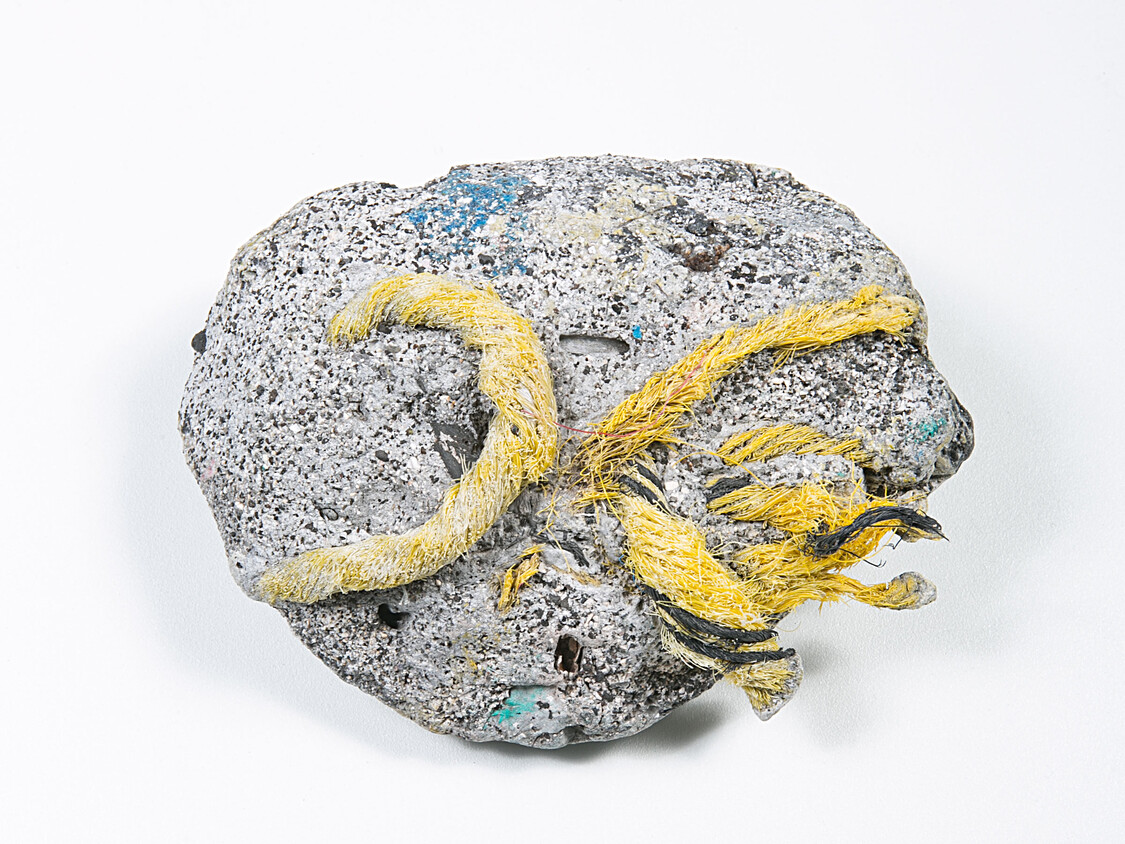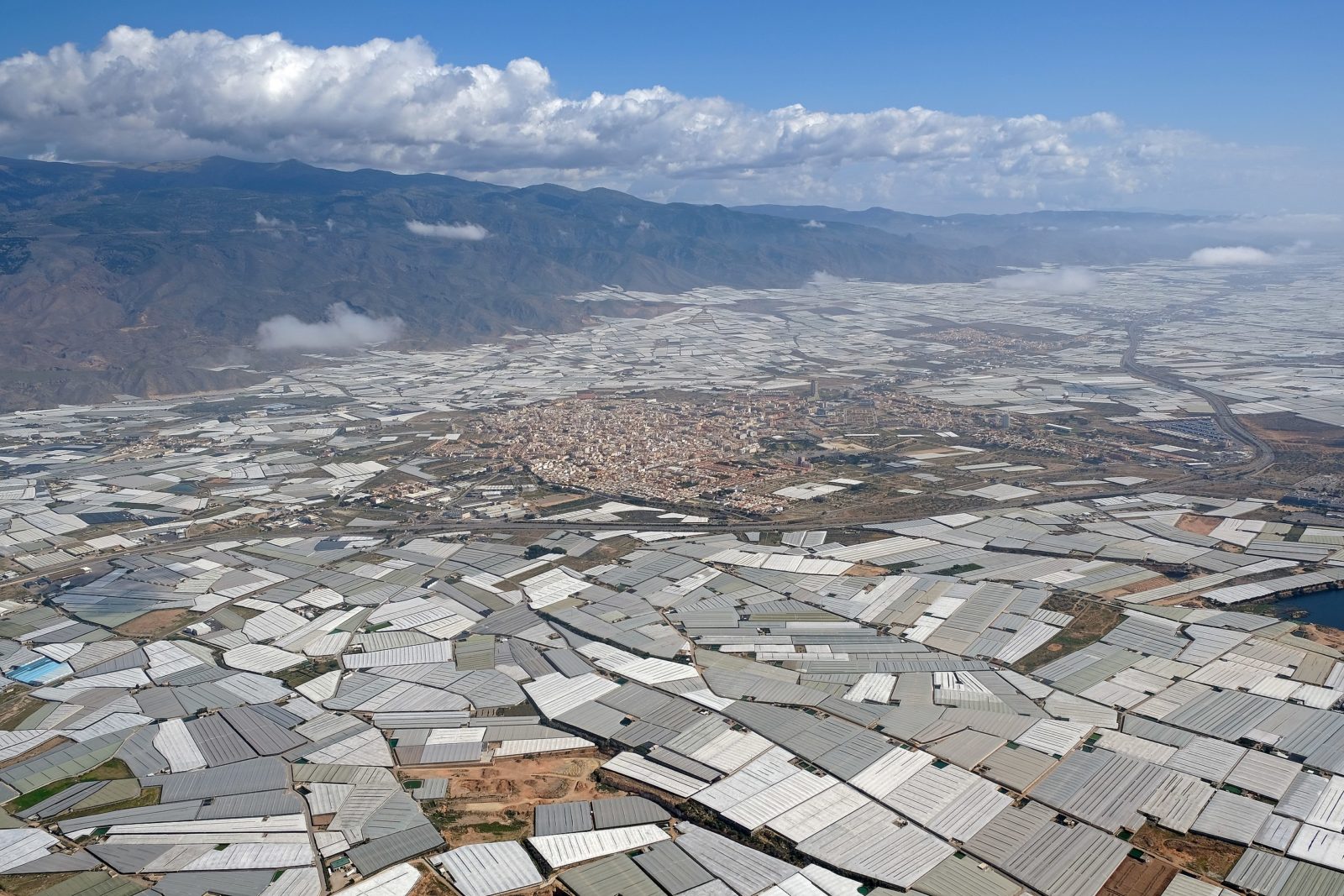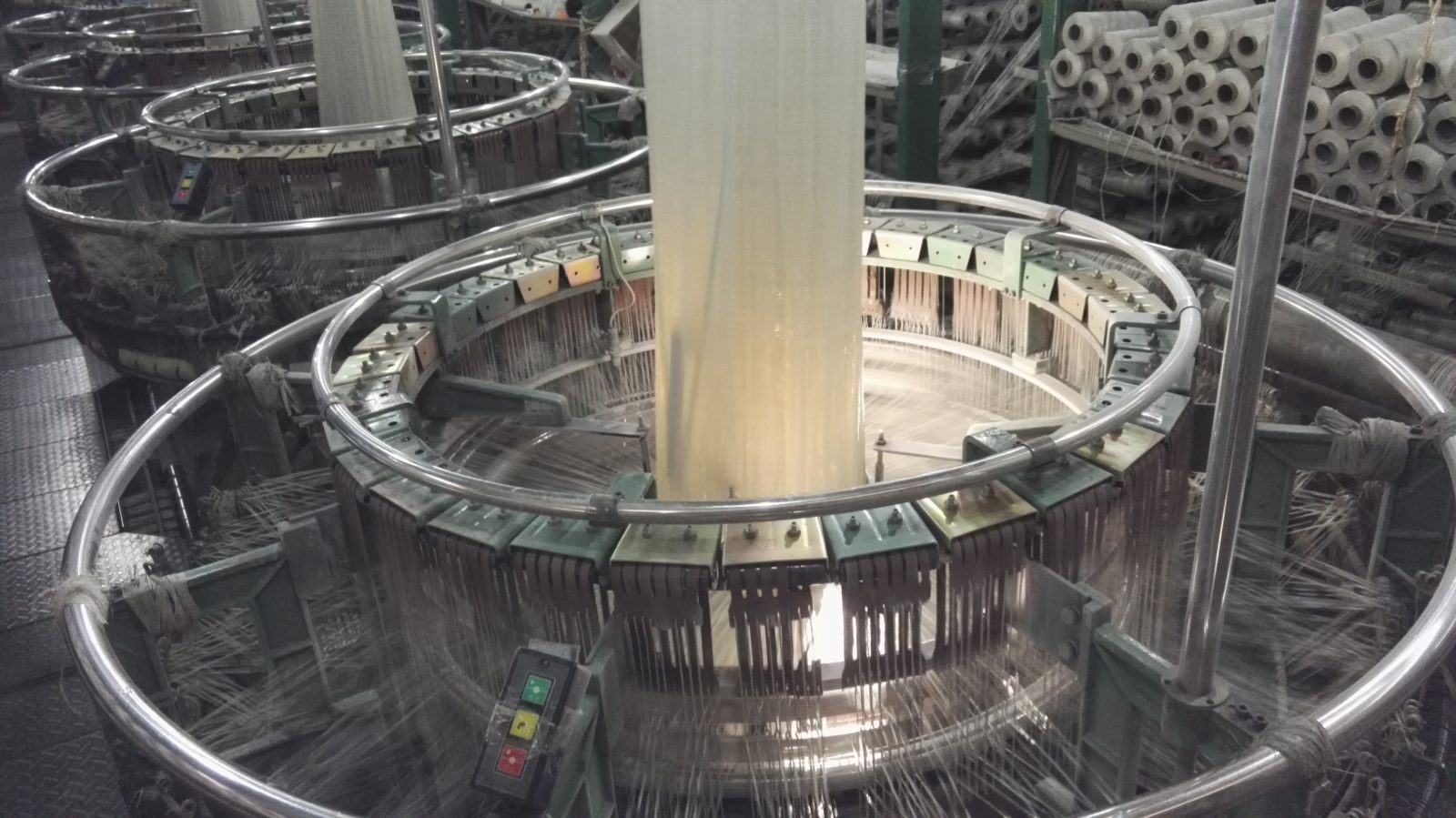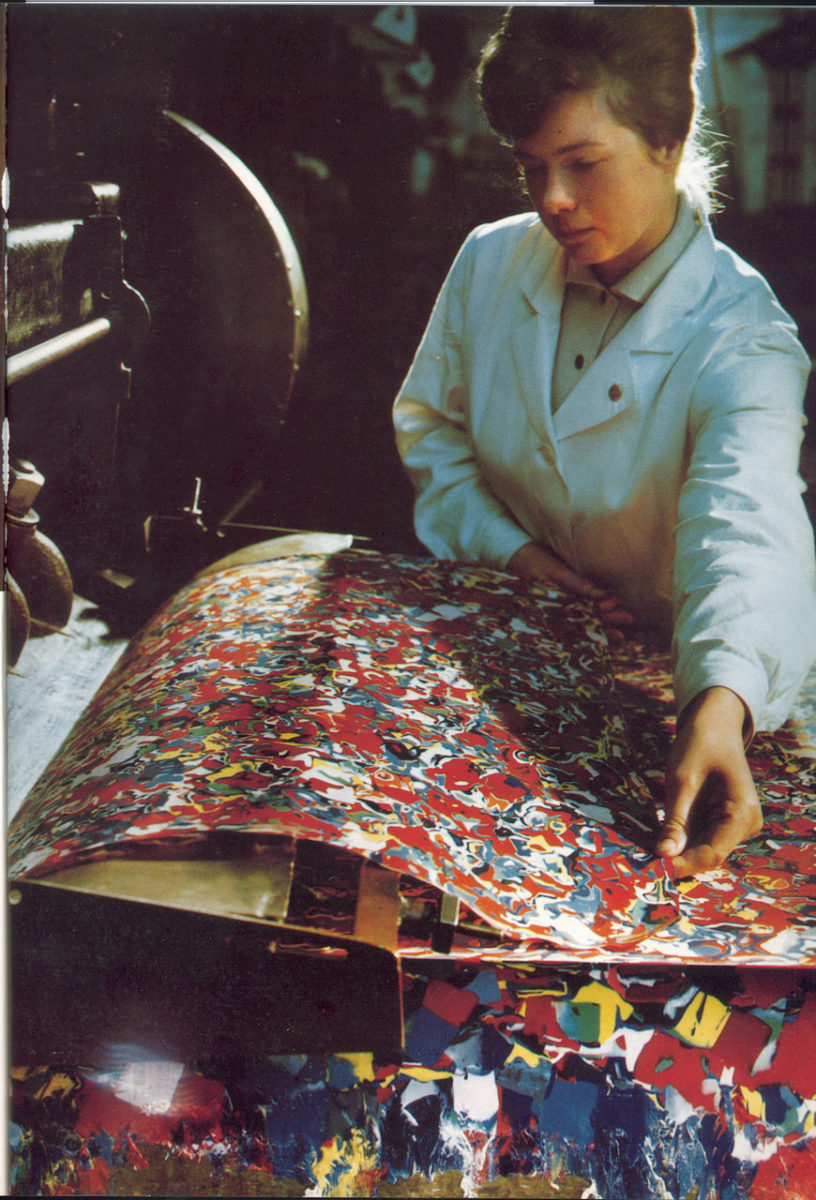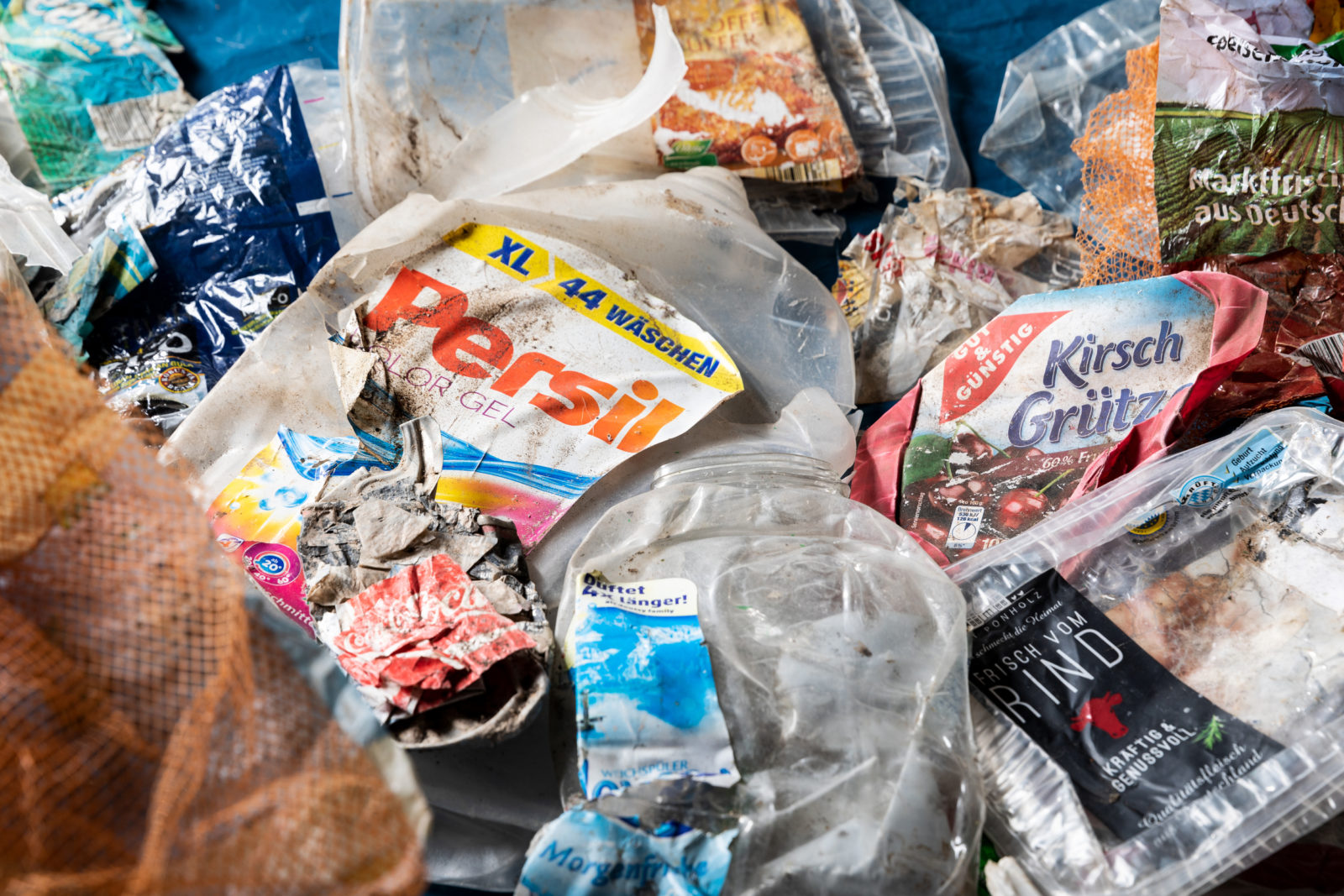Against the Aestheticization of Technofossils
Considering Migrant Labor and Petrochemical Feedstocks in the Future History of Plastic
Plastic and its waste are eye-catching and culturally laden materials. Given that their histories have become entangled with the notion of the technofossil, how can we resist the temptation to aestheticize this material legacy which is accumulating in the rock record? Guiding us through the historical roots, current excesses, and future imaginations of plasticulture in Germany, Spain, and Brazil, historian of technology Andrea Westermann highlights the interconnection of health and environmental hazards as well as consumerism and the exploitation of migrant labor. She calls for including mining and mineral resource issues into future histories of plastic.
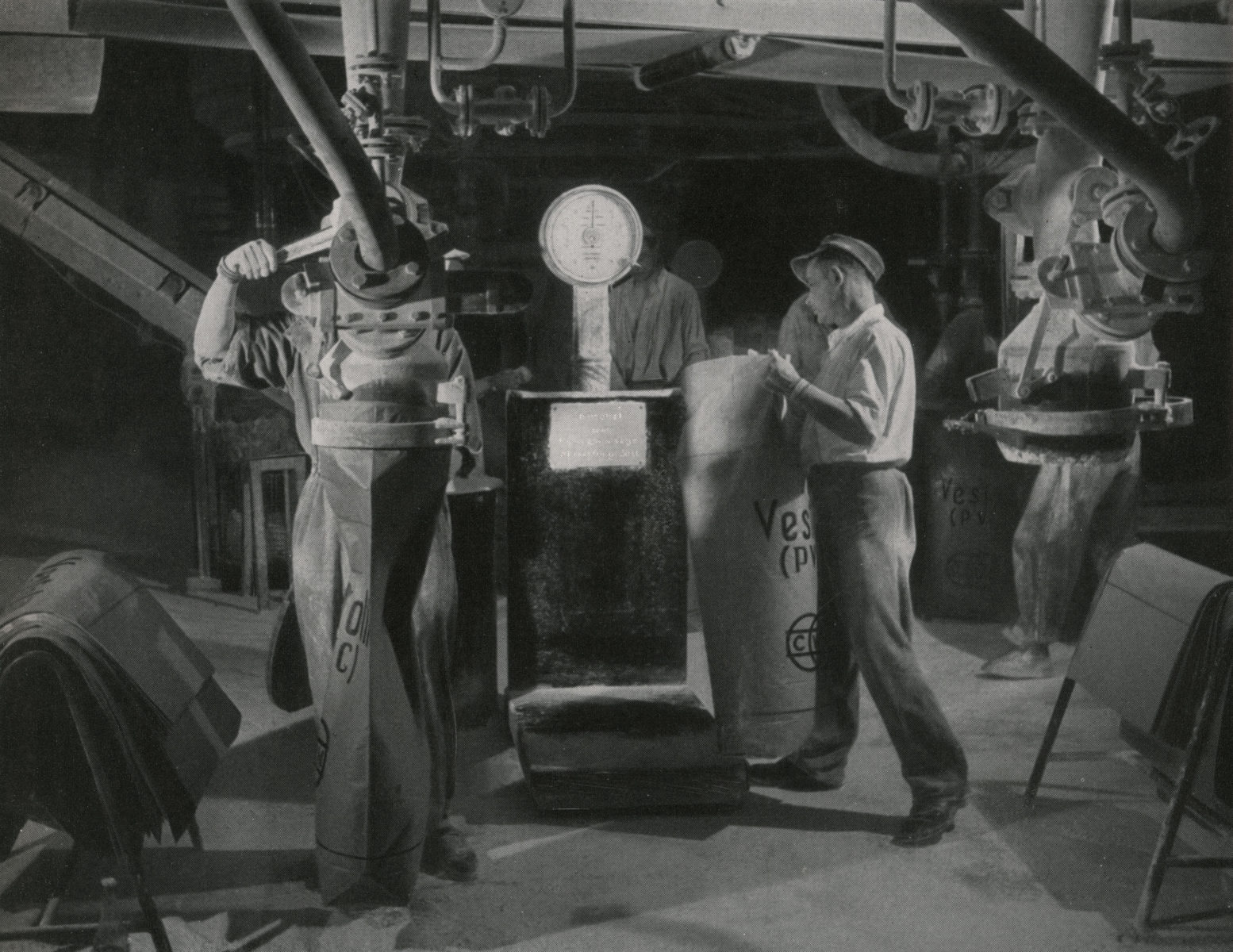
The technofossil notion and its aesthetic dimensions
Early on, researchers of Earth’s crust first suspected, then found, that the hard rock masses were “a register on which all physical forces acting upon the earth had mapped their successive deeds.” By the 1820s, the fossil-bearing sediments had become, “so to speak, a second control register where organic life had inscribed the various phases of its own parallel development.”1 Merriam-Webster Dictionary defines a fossil as “a remnant, impression, or trace of an organism of past geological ages preserved in the earth’s crust.” Examples include stone imprints of plant stems, leaves, and animal structures (bones, shells), fossilized traces that animals had left behind, and objects preserved in amber. Fossils have long been eagerly collected and much admired. Geology and paleontology have depended, in their study of fossils, on the epistemics and aesthetics of ruination, that is, the material process of decay. Petroleum, coal, and metal ores counted as fossils well into the nineteenth century, but have since been removed from the “fossil record.” Still, both the figurative dimension of fossils and the economic value of mineral ores or fossil fuels (note the vestigial semantics!) were crucial in creating the field of geology.
Today’s Anthropocene geologists examine not only the fossil-bearing rock records but also the ongoing accumulation processes in unconsolidated media that might one day turn into crustal matter. They extrapolate the compact lithosphere of the far future from an utterly diverse biosphere, hosting innumerable flows and cycles, actions, organizations, species, and artifacts.2 From these cycles, geologists have picked up on plastic as a candidate for becoming, in Earth’s deep future, an index fossil or technofossil of modern societies—emerging in the stratigraphic record alongside growing carbon dioxide emissions, nuclear radiation, and highly intensive global species exchange and extinction. The 2013 presentation of geologically recycled plastic waste in the form of what has been called “plastiglomerate,” in particular, seemed to corroborate the idea and was widely noticed by the scientific community and the wider public. This stonelike entity found on Kamilo Beach in Hawaii is comprised of melted plastic, beach sediment, basaltic lava fragments, and organic debris. Geologist Patricia Corcoran and others have described plastiglomerate as a “marker horizon of human pollution” in the making.3 The notion of the “marker”—as used in the preceding phrase and in the title of this collection (Anthropogenic Markers)—has had a much more inconspicuous history when compared to the concept of the “technofossil.” For fossils not only feature in the geological record but they also have made recurrent appearances in the history of material culture. In 1866, for instance, the geologist Bernhard von Cotta explained the methodological parallels and affinities he identified between history and geology: “Just like the historian draws his conclusions by interpreting the position and nature of age-old instruments, the geologist draws his conclusions by interpreting the position and nature of the fossil remains of organisms.”4 One year later, Karl Marx put the analogy between fossils and the “relics” of tools or machines from the past to work in the social sciences, as did archaeologist and art historian George Kubler, in his longue durée “history of things,” in 1962, when he described man-made artifacts as “fossilized actions.”5
This entrenched and layered semantics made scholarly claims of plastic, and its fragmented and partly decomposed waste, becoming a globally discernable trace in the rock record of future Earth instantly plausible to many people. Plastic’s material traces would come to indicate past economic actions and cultural activities of by then lost societies. The ongoing interest in plastic things and their nonbiodegradable refuse amassed at lake shores and in marine environments is testament to the persuasiveness of the argument. Contemporary artworks made out of the flotsam and marine waste of mundane plastic commodities and single-service containers even add form and make palpable future technofossils.6 They infuse the concept with beauty and imagination.
Today’s plastic artists join the ranks of their mid and late twentieth-century art and design counterparts who first worked with these new materials. Artists and designers exposed their new synthetic, readily customizable properties, or they benefited from the ability of plastic to assume any desired form without putting particular emphasis on the how and why of their expanded resource base. In the 1960s and 1970s, plastic was definitely defining Western pop culture. The inflatable chair Blow, made by Zanotta out of transparent vinyl, for instance, came to shape the visual and visceral world of things as much as did British model Twiggy wearing a tightly cut vinyl dress. The sonic history of plastic added important nuances, too: think of vinyl as in vinyl records.7 Environmental design, on the one hand, and artwork created from salvaged debris found in the environment, on the other, shared pop culture’s fascination with plastic while taking a more critical stance, gaining momentum in the 1970s and 1980s. Together, the latter two represent a second thread substantiating and feeding into the renewed wave of plastic “art in the Anthropocene.”8
Plastiglomerates, 2013. These found object artworks were the subject of a scientific study by geologist Patricia Corcoran, oceanographer Charles Moore, and artist Kelly Jazvac. Photograph by Jeff Elstone, © all rights reserved Kelly Jazvac
There is much to gain from studying the aesthetic history of both plastics and fossils to illuminate how the technofossil metaphor serves as a tool of creative commensuration. Technofossils are aesthetically configured scaling devices: they allow people to slide up and down temporal scales and meditate on the long-term future via the still recognizable “archaeological” state of things. For while the pollution of the global environment with persistent toxins, novel materials, and radioactivity is real, most human-made materials, plastics among them, will, in all likelihood, not be preserved in an artifact-like form as the notion suggests. In other words: the technofossil metaphor offers a shortcut approach to the deep-time imaginary that relieves natural and social sciences scholars as well as the public at large from radically following geologists through the complexities of assumed sedimentary deposition and lithification processes and the metamorphic changes to the chemical structure and properties of plastics.9 Like with any scaling operation, the epistemic benefit gained from this scaling device is due to imposing “a filter through which the system is viewed.” It inevitably comes with distractions and topical omissions.10
For alternative analyses of plastic’s role in the Anthropocene, historians could turn a blind eye to its aesthetic allure and instead pay attention to the circumstances of its chemical fabrication. Consider, for instance, the photograph (top) that documents not the eventual deposition but the original composition of plastics. It forms part of a marketing publication on vinyl from 1956 whose cover—thick, colored, and soft—was made of the same plastic its pages described in more detail. The men in the photo are bagging recently polymerized polyvinyl chloride powder (PVC or vinyl). We see a busy distribution hub for bulk plastic, where the vinyl powder coming through the tubes on the left and right is repacked in standardized sacks bound for PVC processing plants. We distinguish the brand name. The polymer was (and still is) called Vestolit, produced by Chemische Werke Hüls in Marl, Germany, and now part of a Mexican conglomerate.
The floor, workers’ clothes, and machines are covered in dust; the air is heavy with particulates. In a conventional strategy of industrial photography, the picture makes aesthetic use of the blurred lighting effects caused by air pollution.11 In doing so, it obscures the fact that the workers were inhaling the dust that had this immediate visual effect of softening the contours of the depicted men and machinery. Through repeated exposure, the dust also had imminent deleterious effects on a worker’s respiratory system. The health effects of PVC particles might manifest and progress many years after exposure has ceased. Moreover, at this point in the history of polymerization technology, considerable quantities of monomer vinyl chloride remained in the finished commodity powder. As was shown in 1973, this monomer was a cancerogenic agent that can induce different types of liver cancers.12 Given the worldwide production of plastics, vinyl chloride occupational health hazards were detected, denounced, and then studied internationally. From the early 1970s to the late 1980s, the media, consumers, and governments dealt with these unintended health consequences almost as prominently as they do with plastic gyres in the oceans today. This first major crisis for the plastic industry intersected with the more slowly mounting critique of plastic waste. Both problems, new at the time, highlighted and exacerbated each other.
Today, we see a return of the very same reassessment: abundant plastic recast as a health hazard. Plastic-filled ocean gyres have gone from being considered massive accumulations of modern refuse, foreseen and feared by environmental activists since the late 1960s, to epitomizing how societies have cast away their waste only to get it back in due time via Earth’s hydrological, atmospheric, and biochemical cycles. To achieve plastics’ desired properties and functionalities, producers add catalysts, polymerization solvents, plasticizers, metals, dyes, flame retardants, UV stabilizers, antioxidants, and antimicrobials.13 Once sunk in the ocean, plastic fragments not only leak (some of) these ingredients but also attract free-floating chemicals such as persistent organic pollutants stemming from various sources. Arguably, the potential health and environmental hazards plastics carry are nearly as varied as the polymer chains that form the structure and repository of their material characteristics.
For one thing, we can expect that plastic patches in the oceans and their implications and risks will initiate a wave of political and economic histories that tell how they became objects of bio(geo)chemical research and legal regulation within specific activist and scientific communities around the world.14 Moreover, I have found additional plastic concentrations of a terrestrial dimension likewise in need of historicization—one observed, one invented: the first the so-called mar de plástico in southeastern Spain, accumulated by Andalusia’s horticulture since the 1970s, and the other the fantastically rich plastic deposit discovered in the Amazonian subsoil, called “the Matacão,” in Karen Tei Yamashita’s novel Through the Arc of the Rain Forest from 1990. The three geographic sites highlight each other’s similarities and dissimilarities, entanglements, and shared genealogies. To the afterlife of plastic as lingering waste, I join an episode of plastics put to industrial work as well as a glimpse into the mining history of plastic. While in this essay my attention is captured, once again, by the imaginary power these sites exude, I suggest thinking, via the example of the Plastic Sea dealt with in the next section, about the interdependency between plastic materials and migrant labor. In the case of the fictitious Matacão, discussed in the third section, I call for studying past and present changes in plastics’ resource base that have too long bypassed historical consideration.
The landbound “Mar de Plástico” in southeastern Spain: Histories of migrant labor
Find here the concise exposure of both the surface phenomenon and the social fact the Plastic Sea epitomizes. “From the lens of a passing satellite, Almería province is one of the most recognizable spots on the planet. The roofs of tens of thousands of closely packed plastic greenhouses form a blanket of mirrored light beaming into space,” historian and journalist Giles Tremlett writes in his 2005 report for the Guardian. Intensive agriculture, he continues,
“turned one of Spain’s poorest corners into Europe’s largest greenhouse. An area so arid and dusty that it provided the backdrop for spaghetti westerns, Almería has made a fortune by covering itself with a canopy of transparent plastic. Above all, it is a monument to the way we now grow our food. Almería, and the area around it, is Europe’s winter market garden.”15
Today, the largest stretch of Almería’s Plastic Sea extends over 22,000 hectares (or 42,000 soccer pitches) in the Campo de Dalías district. Already 20,000 hectares in 2001, it had nearly reached its current size twenty years ago. The second largest accumulation of plastic greenhouses is a little further east, in the Campo Níjar y Bajo Andarax district, and extends over 9,100 hectares.16 In the first half of 2021, Almería accounted for 19.8 percent of Spain’s total export value, amounting to 2 billion euros.17 Interspersed between the greenhouses of the roughly 15,000 growers are over ninety shanty towns, provisionary settlements housing hundreds of migrant day laborers and their families. Seen from a distance, the settlements add to the canopy but are like hothouses in a distorted mirror: the hovels are provisionary setups, made from vegetable packaging, timber, metal, and discarded and foraged plastic sheeting, without electricity, running water, or sanitation.
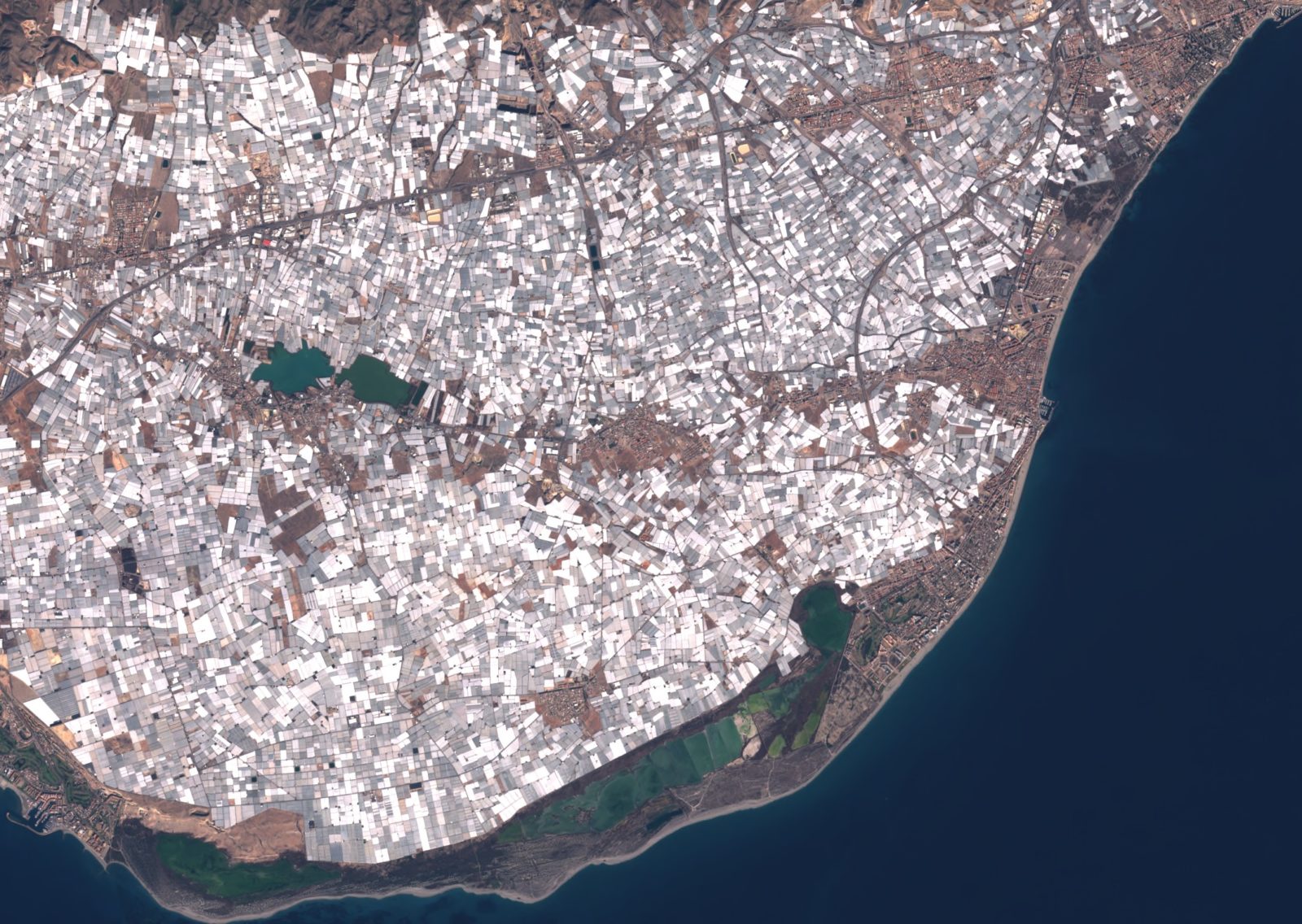
Unlike the ocean garbage patches, the greenhouse plastic concentration does not mark the end of the material’s value chain. It is accumulating while under heavy use and at the crossroads with the value chain of horticulture that makes its way into German, British, and French supermarkets—Lidl, Tesco, Aldi, Sainsbury’s, and Asda. In many respects though, it is the landbound analog to the ocean plastic gyres. Spain’s tide of plastic gradually rose and lapped against the desert inland of Almería after 1970. The development of Campo de Dalías started in 1956. The first greenhouse was constructed in 1963, turning out impressive yields: compared to free-air agriculture, the growth rate was 358 percent for tomatoes, 465 percent for bell peppers, and 362 percent for cucumbers. Greenhouse-grown produce doubled and tripled the gains from open-air-grown vegetables, too. When Almería saw its first regional conference on plastics in agriculture in 1969, the word “plasticulture”—designating such forms of growing produce—had not yet been invented. Greenhouse construction really took off in the early 1970s. Funds started to flow for growers who were dependent on state-sponsored loans; incorporating hothouses and any consequent innovation or technical changes into their operations required a huge investment for peasant families.18
Satellite pictures confirm the terrestrial dimensions of plastic-supported intensive agriculture. The terrestrial aspects are enhanced and grounded because the plastic infrastructure unites the landscape’s three natural elements. In a 1981 analysis, two agricultural engineers described Almería as both “a desert and an orchard”: “It is curious—and worth emphasizing—that it is precisely the new discovery of this trinity—soil, water, and sun—to which Almería owes its recent progress.”19 They argued that Almería agriculture reinvented the region’s soils by putting the once hostile sand to work: farmers covered and padded the planted fields with a layer of sand.20 This prevented the rapid drying out of soils, increased the soil temperature, repelled many insects, and combated the salinity of the soil below.21 Almería’s farmers clearly also discovered its hidden underground water resources. Moreover, the report’s authors felt that Almería’s agriculture industry had “discovered the new Sun.”22 The sun was a curse that parched the soil and scorched the plants, but, mediated by plastic, it also allowed farmers to ripen crops in winter time. Plastic protection covers (abrigos) enabled them to “benefit maximally from the temperatures in winter that nature only provided in summer.”23 The plastic envelopes were also set up to protect the plants from the typically strong winds. Today, hothouse constructions and their sheeting ensure the microclimate and influx of air are strictly regulated: the sheeting catches and maintains the warmth of the sunlight at an optimal temperature range (the opaque plastic roofs are temporally whitened to reflect heat), thus accelerating, intensifying, and optimizing plant growth. The result is earlier, multiple, and higher overall yields. Vinyl tube systems were added for drip irrigation to save water extracted from the aquifers and retain the nutrients within the soil. Fertilizers are also applied via the tubes. For a long time now, the beach sand has taken turns with vinyl mulch to cover the soil in greenhouses.24
Vinyl was the earliest and counts among the most important types of thermoplastic used in postwar Western Europe. Take West Germany, for instance. A growing range of plastic commodities and the reconstruction of societal infrastructure with plastic helped remodel and furnish the country as a consumer democracy after 1945.25 The “plastic revolution” or “miracle” in Spain’s fruit and vegetable production jumped in a little later and its arrival stocked West German supermarkets with an affordable year-round offer of once exotic and previously seasonal produce. Both West Germany’s consumer democracy and Spain’s agricultural export politics were plastic-engineered. They also relied on migrant labor. Within Spain, the plastic revolution changed Andalusia’s perceived status from that of an underdeveloped periphery in need of improvement to a political and economic heavyweight. Regional farmers had benefited from internal colonization and development politics that, since the early 1950s, had made abundant groundwater accessible and constructed villages to attract and house people.26
In both countries, the year 1973 marked a turning point regarding plastic and migrant workers. In March of that year, the German Communist Party’s factory newspaper at Dynamit Nobel AG, with a circulation of 7,000, featured the headline: “Mysterious health hazards in PVC production.”27 In this chemical factory, located in Troisdorf near Bonn, “guest workers” (Gastarbeiter) were disproportionately assigned dirty jobs. These workers had to climb into the not yet fully automatized autoclaves to scrape off caked-on pieces of vinyl from the inner walls and stirring paddles. The workers’ and migrant workers’ health hazard concerns were embraced by their colleagues, their city, and the national press. The many governmental and industrial institutions dealing with occupational health hazards, usually working under the public radar, suddenly came under close scrutiny.
The “Mar de Plástico” near El Ejido. Photo by kallerna, Wikimedia
Concurrently, Almería’s new status within Spain and beyond included an inversion of migration flows to and from the region for both domestic and international reasons. In 1973, just when Spanish state funds began to support the construction of plastic greenhouses and the plasticulture boom really took off, Northern European countries shut down their labor migration programs one by one, with West Germany setting the example: “This changed the direction of Alpujarra emigration. The new destination was now Campo de Dalías, where people purchased land or worked on the horticultural farms.”28 Plasticulture’s development increased the demand for manpower and readily absorbed the numbers of workers flocking to Almería “to work seasonally in the greenhouses when they were needed for crop growing activities.”29
Migration from the Alpujarra region down to the coast in the 1970s and 1980s was followed first by North then West African labor migrants, as well as workers from Romania. Population growth in Plastic Sea cities like El Ejido and Roquetas de Mar followed suit: in El Ejido, from 30,000 residents in 1980, to 55,000 in 2001, and 83,000 by 2020, and in Roquetas de Mar, from 30,000 in 1990 to 100,000 by 2020. In both cities today, migrants represent around 30 percent of the residents. Social integration remains poor. In 2017, a workers’ guide for Almería stated that most of Europe takes for granted the supermarket shelves full of fruit and vegetables from southern Spain. Hardly anyone knows the working and production conditions that are endured: the hard, often underpaid work and the health consequences.30
Almería’s very own greenhouse effects have been labor migration as well as radical environmental change. Labor migrants suffer from the very same transformations they have helped bring about.31 Like in the ocean environment with the garbage patches, vinyl and polyethylene in Almería act as media and attractors of chemical compounds, causing hazards in the greenhouses’ microclimates and interacting with pesticides in particular.32 For workers living in slums, the situation can be more dangerous due to constant exposure. It doesn’t get hot only inside the greenhouses but also inside their shanties. People fear inhaling the toxic fumes the plastic sheeting releases. Furthermore, rainstorms, fires, and government decisions have repeatedly destroyed and dismantled various settlements.33 Industry’s disregard for occupational health, safety, and environmental issues were interpreted as white-collar crimes during the occupational cancer crisis faced by vinyl producers in Western Europe: for years, state bureaucrats had downplayed the company abuses brought to their attention. Given the small-owner status of most farmers, exploitation and violence in the plasticulture context were, by contrast, summarized in 2016 as if belonging to “labor rules […] of another era.”34 Despite their knowledge, employers, local and state governments, and the served supermarkets and consumers continue to ignore the health hazards and social injustices inherently incorporated in Almería’s agriculture. Field-worker and union activist Spitou Mendy, who emigrated from Ghana, has repeatedly spoken of slave labor conditions: “I have been working here and struggling for 19 years, many of them under plastic. I have to say the main change in this time is: nothing.”35 The reason for this may be no labor shortage has ever occurred. In 2020, more than 5,000 refugees reached Almería’s shores by boat: the lowest number in a long time, but still enough to bring newcomers into the industry.
Agriculture in Almería is toxic for people. It is problematic for the environment, too. It has caused elemental change on a regional scale and feeds into global environmental degradation. Climate change combined with underground water resources exhausted by agricultural and population growth has forced a heavy reliance on desalinated seawater. Under the imminent threat of extensive landscape desertification in southern Spain, geoengineering has become a routine that must be endured.36 Moreover, the plastic sheeting on each greenhouse has to be replaced every four to six years. For decades, companies have disposed of them on nearby dried riverbeds and beaches—estuaries of the Plastic Sea, if you will; winds and heavy downpours then drive them into the Mediterranean. Activist and institutional plastic waste initiatives spurred by discussions on the ocean garbage patches have resulted in collection and recycling projects for agricultural waste in recent years. Now, 85 percent of the 33,000 tons of plastic waste accumulating each year are said to be recycled, which leaves 5,000 tons untreated.37 Earlier and more recent videos of such waste deposits show what has accrued over time; they do not show what has so far been lost to the sea.38
Entomologists and agricultural scientists are indeed working toward adapting to global warming and the imperative to use fewer pesticides.39 One entomologist employed by the fruit and vegetable producers in Almería moreover sees a favorable trade-off for the region:
“The contribution of the total horticultural sector, including the supply and commercial industry, is rising to 40 percent of Almeria’s GDP. An impressive figure, considering that this agricultural system only covers 3.4 percent of the provincial territory, allowing a major part of the province to be respected as mostly protected, natural areas.”40
However, as I showed in this section, budgeting and balancing the economic value of natural resources against environmental protection captures only half the problem when it comes to solving future sustainability issues, as it ignores the topic of labor justice.
A plastic woven bag production line in Southwest China, 2017. Photo by Zhangzj cet, Wikimedia
The invented geology of the Matacão plastic deposit: Histories of petrochemical opportunities
Speaking of natural resource budgeting: while the Plastic Sea accrues during the most productive phase of plastic’s lifecycle and the oceans’ plastic gyres represent the end of plastic’s economic life and value, the third terrestrial concentration deals with an imagined plastic geology and the extraction of plastic as a raw material. Karen Tei Yamashita’s huge plastic deposit, discovered in the second half of the twentieth century in the Brazilian Amazon, is the text-generating (and world-making) entity at the center of her ironic and melodramatic novel Through the Arc of the Rain Forest, which is full of sharp ideas on science, consumerism, postcolonialism, and environmental degradation. One day, reckless deforestation combines with heavy rains to wash away the soil and lay bare a strange, impenetrable underground substrate. The spacious surface is slick and shiny and becomes known as the Matacão: a generic name meaning “boulder” in Portuguese. People first suggest that it is “the earth’s mantle rising to the surface or the injection of a cement layer by a powerful multinational.”41 But early on in the novel, scientists find the Matacão to be a “polyurethane polymer.” Like ore deposits, coal seams, and oil-bearing formations, it is a “fossil” not in the paleontological sense of discrete objects but in the now mostly lost, more encompassing eighteenth- and nineteenth-century usage of the word that also designates the lumped-together, mass-like forms of earth products. Eventually, it becomes clear that the deposit is a technofossil made out of plastic waste. Its genesis has run even quicker than current geologists’ thought experiments that fast-forward time to project the possible emergence of technofossils. In the space of less than a hundred years, plastic waste has turned into rock (many insist on not only a geological but also a spiritual miracle). The fictitious rock masses make recycling dreams come true on an unhoped-for scale.42 Scientists assert:
“[The Matacão] had been formed for the most part within the last century, paralleling the development of more common forms of plastic, polyurethane and styrofoam. Enormous landfills of nonbiodegradable material buried under virtually every populated part of the Earth had undergone tremendous pressure, pushed ever farther into the lower layers of the Earth’s mantle. The liquid deposits of molten mass had been squeezed through underground veins to virgin areas of the Earth. The Amazon Forest got plenty.”43
Like how real-life ocean currents have concentrated global waste streams in garbage patches, in Yamashita’s novel, terrestrial currents and undercurrents entangled in geological processes have mustered the entirety of the globe’s plastic waste into one deposit. A reader might interpret that there was still enough pristine nature in the Amazon Forest worth blemishing, once and forever. At the same time, the reader might come to think that the new plastic deposit is in its rightful place: within the (subterranean) wealth of Amazonas, the world’s exquisitely filled treasure trove. The philosopher Roland Barthes enthused, with uncanny pleasure in 1957—along with most plastic engineers—that plastic ultimately would top all other materials. The Matacão, in its properties (it is even magnetic!) and utmost versatility, outmatches any of the other resources available in the Amazon and considered valuable up until its discovery: lumber, iron ore, gold, manganese ore, and rubber.44 Earth has pragmatically adapted to the rhythms of modern history, it seems. It presents to the world a truly cooperative, win-win solution—from the pen of magic realism!45
This powerful literary genre, first popularized in the early twentieth century, early on exposed Europe’s colonialism. In Yamashita’s novel, the “Brazilian ministry had to create a department to keep track” of public and private mining projects targeting the Matacão. Parliament argues for strict control of this natural resource: “Brazil had once before emptied its wealthy gold mines into the coffers of the Portuguese Crown and consequently financed Britain’s Industrial Revolution; this time, if there was any wealth to be had, it should remain in Brazil.”46 There is much wealth to be gained: everything from money, body implants, and nature to cities are recast in plastic. Yet the end comes to the Matacão boom as quickly as it began. Hardly a decade or so into this new “plastic age,” a bacterium infests the Matacão deposit, causing its slow but definitive corrosion. “Everything else made of Matacão plastic” is gnawed down too. The world is left in shambles and complete disarray; luckily for the world, though, a return to old materials seems “viable.”47
What I find so interesting about the Matacão is that it brings plastic’s resource base to the forefront. If the definition of the Anthropocene as Earth’s socially induced historical present hinges on extrapolations of future interactions between terrestrial and societal scales of change: what, then, about the real-world future of plastic, and its raw material base, for that matter? We currently see a global urge to mitigate or balance interactions between terrestrial and societal scales: new legislation prohibits plastic packaging and individual service containers in the EU and countries such as Indonesia and Malaysia. China is no longer accepting others’ waste exports. This has led to a renewed attempt in Europe to create a more financially attractive political economy of recycling.48 Even more encompassing is an international push to create a binding global agreement to address the life cycle of plastics, calling for an UN treaty that commits the world to the reduction of household plastic, efficient plastic waste treatment across all geographies and sectors (agriculture and heavy industry included), and the substitution and detoxification of plastics’ compounds. It also demands that funding be made available to poorer states so they can contribute meaningfully to these plastic reduction efforts. The resolution plans have gained traction. Rwanda and Peru recently presented a draft resolution in Geneva, and seventy-five states have signaled their willingness to start negotiations, envisioned for the spring of 2022.49 These efforts, however, are counteracted by trends that experts see creating an overall increase in plastic waste.50 This is the case because implementing laws is a difficult political feat. The Basel Convention, on controlling transboundary movements of hazardous waste and their disposal, defines waste from products made out of polyethylene (PE), polypropylene (PP), and polyethylene terephthalate (PET) as freely tradable commodities, because these substances are in high demand on recycling markets. Yet this demand does not automatically prevent their export to unmanaged waste disposal sites in Asia, as a recent Greenpeace study has shown.51
A vinyl record. Photo by Pasi Mammela, CC BY-SA 2.0 from Wikimedia
Another issue is superseding the question of how and why our governments’ fail to regulate plastic waste. It is now fundamental that we find a way for all these regulating efforts to incorporate an understanding of the plastic industry’s own perceived constraints and expectations when it comes to decarbonizing economies.52 It is time to study the mining industry, petrochemistry, and the materials and engineering sciences as powerful actors and close collaborators in the histories of plastics. One fact to keep in mind is that plastics are one of big oil’s most successful commodities. Big oil companies are contingent on geological expertise. They have, in turn, contributed to organizing and shaping the Earth sciences’ research infrastructure. These interdependencies are worth studying. Annual plastic output has nearly doubled since the beginning of the millennium.53 Arguably, plastic production will continue to grow exponentially. Currently, “368 million metric tons of virgin plastics are produced annually, with production expected to double by 2040.”54 By all accounts, plastic’s future looks bright as ever. If burning fossil fuels for energy production is radically regulated and reduced, then more fossil fuel will be available for plastics production. According to International Energy Agency assessments, petrochemicals will soon become the largest driver of global oil consumption: “They are set to account for more than a third of the growth in oil demand by 2030, and nearly half by 2050.”55 This fossil fuel feedstock may or may not become more expensive; views differ in this respect and might be assessed against earlier episodes in the history of plastics.
Vinyl foil calender. Courtesy RWWA Köln, signature XIVe 14066: Hundert Jahre Dynamit Nobel 1865-1965, © all rights reserved to the original publisher
Writing the history of the Anthropocene—and the future role of plastics in it
I started this essay with a call for resisting the aesthetic allure of both fossils and plastics when it comes to writing the history of the Anthropocene. Let me end with two thoughts: one about the history of science’s role in writing this history; the other about the future, alternative role of plastic in it. To historians of science, geologists’ efforts to distinguish between “anthropocenic” and “anthropogenic” markers while formalizing the stratigraphic boundary of the new geological present conforms to the logics of the geological time scale—logics that the suggestion of an Anthropocene epoch has already stretched considerably. At the same time, the Anthropocene Working Group’s need for societies’ “long enough” reach into Earth’s possible future amounts—inadvertently, perhaps—to nullifying the political attention and consequences that Anthropocene discussions have had so far. From a history-of-science perspective, for instance, it is obvious that the high political stakes involved have turned into a sine qua non for carving out the emerging field of Anthropocene geology.
In turn, the methods and scope of the history of science are being affected by Anthropocene discussions as well. I expect further blurring of the boundaries that set it apart from social, economic, and political history, or critical geography and anthropology. Historians of science and environmental historians already study the disciplinary politics within the Earth sciences and, concurrently, analyze societal politics as their flip side and context. They study geological concepts while at the same time using them to better chart and explain those historical spaces where societal actions have started to intersect with terrestrial processes.56 Just like other historians (think of Dipesh Chakrabarty as the historian of subalternity) and social scientists, they have started to reframe the inspiring questions Earth scientists have posed according to their own professional standards and interests—because historical and Earth historical times have been co-evolving for a while now and will continue to do so.57
When control mechanisms fail: German plastic waste is not sent to Malaysia for recycling purposes only. It also lands in local landfills. © all rights reserved Fred Dott/Greenpeace
Activists, scientists, artists, schoolchildren, and many other people around the world have collected plastic waste from the oceans’ garbage patches and from their local beaches. Over the past decade, they have come to interpret such fragments as fossilized cultural objects. Making plastic waste a marker of the Anthropocene has helped establish a better understanding of the cumulative and persistent effects of societal action. This waste-centered—mostly post-consumer-waste-centered—account has sidelined, though, the many histories of (migrant) labor that are, in their own ways, entangled with the histories of mining, production, and industrial uses of plastic; histories this essay has sought to call to mind. In so doing, it attends to the imperative voiced within Anthropocene studies to consider both terrestrial and societal scales, assess historical and political accountability, and combine phenomena of economic and biogeochemical accumulation.58 Each of the three pileups of plastic analyzed in the preceding sections makes clear that environmental sustainability and socioeconomic justice are two faces of the same coin. This becomes even more obvious when these two issues are considered together. The myriad alliances of consumer citizens, workers’ unions, migration organizations, ocean activists, and environmental health activists, but also state regulators and other institutions of political decision-making are currently working toward this recognition.
There are historical precedents for the co-construction of the future of plastics—precedents that come with some caveats. In the case of West Germany fifty years ago, plastic waste and the health hazards discovered to be linked to the production of vinyl inspired people write to newspaper editors, confront the authorities regarding the need for industry regulation, and remind manufacturing companies of their responsibilities to consumers.59 West Germany, like many European states, saw an astonishing upsurge in consumer protection and environmental laws in the 1970s and 1980s.60 However, these improvements in health and safety excluded large parts of the global population.
The plastics industry reacted with containing the damage any such regulation politics could have for sales growth. Recycling has been one answer companies were forced to pursue. As has become clear over the years, they did so half-heartedly and, in all likelihood, also deceptively. Citizens and social scientists alike have recurrently noted that recycling has remained just the latest promise attached to plastics that’s “always just about to happen.”61 Through the carefully entertained utopianism of recycling, the oil and chemical industries together with industrial plastic users have succeeded fairly well in preserving self-regulation over politically binding restrictions, as well as fostering consumers’ wishes to buy and further entrenching their habits to throw away, by appeasing public concerns for plastic’s unwanted effects.62 I think that visions of future plastics markets should no longer conform to the interests of corporate protagonists in the petrochemical sector and its downstream industrial users alone. The recycling markets of plastic are already up for political discussion and public scrutiny; but so are the feedstocks, production, and commercial uses of plastic.
Andrea Westermann earned her PhD in History from the University of Bielefeld with a dissertation on Plastic and Political Culture in West Germany. She specializes in the history of earth sciences, environmental history, environmental migration, and the history of material culture.
Please cite as: Westermann, A (2022) Against the Aestheticization of Technofossils. Considering Migrant Labor and Petrochemical Feedstocks in the Future History of Plastic. In: Rosol C and Rispoli G (eds) Anthropogenic Markers: Stratigraphy and Context, Anthropocene Curriculum. Berlin: Max Planck Institute for the History of Science. DOI: 10.58049/2N8H-0B93
